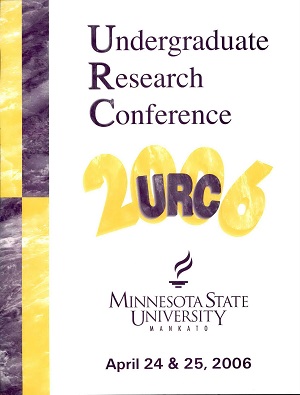The Use of Paralinguistics in Spontaneous Speech of Children with Williams Syndrome and Typically Developing Children
Location
CSU North Ballroom
Start Date
24-4-2006 10:30 AM
End Date
24-4-2006 12:30 PM
Student's Major
Speech, Hearing, and Rehabilitation Services
Student's College
Allied Health and Nursing
Mentor's Name
Patricia Hargrove
Mentor's Department
Speech, Hearing, and Rehabilitation Services
Mentor's College
Allied Health and Nursing
Description
This project investigated selected aspects of paralinguistics in spontaneous speech of speakers with Williams syndrome. Speakers with Williams syndrome "are noted for their well developed vocabulary, relatively complex and syntactically correct sentences, and their ability to spin a good tale. In contrast, their reasoning usually remains at a pre-operational or preschool level, and they typically have difficulty grasping cause-effect relations" (Semel & Rosner, 2003, p. 5).
This research focused on an area of communication called paralinguistics which involved the use of nonspeech sounds for communication. Specifically, we looked at the frequency of laughing and sound effects produced during conversation. Ten participants, five with Williams syndrome and five typically developing peers, individually talked with a graduate clinician on a topic of their interest. The conversations were analyzed for the frequency of laughing and sound effects and the proportion of laughing and sound effects (e.g., # of occurrences of laughter/# of sentences).
The results will be discussed in light of the commonly held impression that speakers with Williams syndrome are involved, engaged, and charming.
The Use of Paralinguistics in Spontaneous Speech of Children with Williams Syndrome and Typically Developing Children
CSU North Ballroom
This project investigated selected aspects of paralinguistics in spontaneous speech of speakers with Williams syndrome. Speakers with Williams syndrome "are noted for their well developed vocabulary, relatively complex and syntactically correct sentences, and their ability to spin a good tale. In contrast, their reasoning usually remains at a pre-operational or preschool level, and they typically have difficulty grasping cause-effect relations" (Semel & Rosner, 2003, p. 5).
This research focused on an area of communication called paralinguistics which involved the use of nonspeech sounds for communication. Specifically, we looked at the frequency of laughing and sound effects produced during conversation. Ten participants, five with Williams syndrome and five typically developing peers, individually talked with a graduate clinician on a topic of their interest. The conversations were analyzed for the frequency of laughing and sound effects and the proportion of laughing and sound effects (e.g., # of occurrences of laughter/# of sentences).
The results will be discussed in light of the commonly held impression that speakers with Williams syndrome are involved, engaged, and charming.
Recommended Citation
Ritter, Kelly; Evan Panitzke; and Emily Kruse. "The Use of Paralinguistics in Spontaneous Speech of Children with Williams Syndrome and Typically Developing Children." Undergraduate Research Symposium, Mankato, MN, April 24, 2006.
https://cornerstone.lib.mnsu.edu/urs/2006/poster-session-A/8



